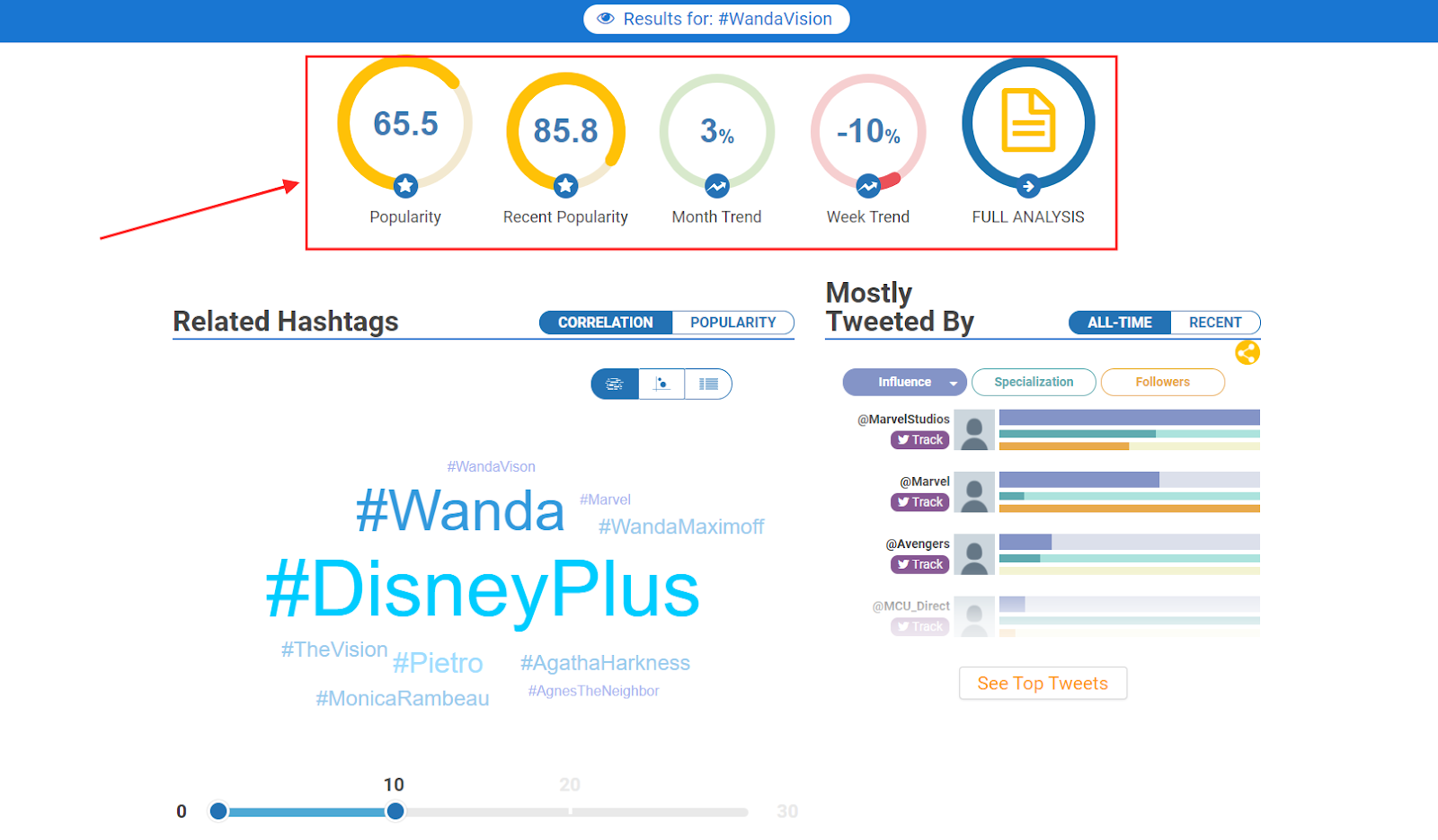Hashtags started as content-classification and grouping tools on Twitter. But, their application has widened by miles since then. Today, social media campaigns are incomplete without hashtags.
However, not many social media pros understand the importance of hashtag tracking.
Sound familiar?
If you’re one of those marketers who’s not using hashtags strategically, your marketing efforts might not yield the desired results. Contrary to popular belief, simply stuffing hashtags into posts isn’t enough to propel reach, engagement, or popularity on social media. In fact, using the wrong hashtags might be counter-productive to your campaigns in the long term.
To learn, in detail, about the hashtag-tracking process and metrics that matter, read this post carefully.
Hashtag tracking: A 3-step strategy to do it efficiently
If hashtag tracking sounds too technical or complicated, you’re in for a pleasant surprise. The whole process can be broken down into 3 simple steps, including:
1. Decide on a unique hashtag
To start with hashtag tracking, you need to craft a unique campaign hashtag.
Why so?
Two reasons:
- When you incorporate the custom hashtag into all of your campaign-related content, all of them show up in the hashtag’s feed. Your hashtag feeds look uncluttered and clean. You can easily see the likes, comments and reshares on each post, without being distracted by your other content.
- If your hashtag is too broad and generic, you can bet it’s being used by other users as well. The result is that your hashtag feeds will be full of unrelated content and campaign tracking will become a messy affair.
So, how do you craft a hashtag that resonates with your campaign?
If you’re the creative kind, think of a catchy hashtag for your campaign. It can be your campaign’s slogan or a hybrid of your campaign + brand name.
If you’d rather leave the creative tasks to professional writers, go for that option. But approach the hiring process with care; hire social media content creators who have experience on these platforms. You don’t want to entrust your campaigns to inexperienced or incompetent people just to save a few bucks. Writers who excel at social media writing can craft hashtags for different platforms in minutes.
The issue with hiring writers is that you might end up over-spending.
Then what?
There’s a cost-effective alternative I use regularly—free hashtag generating tools like Hashtagify. I simply load my campaign niche into the tool and I get hundreds of hashtag options to choose from.
The options are sorted by projected reach, based on historical data. I can also search related hashtags and filter search results by campaign location. All in all, I save a lot of time (and money) with this method.
Whatever method of hashtag generation you use, ensure that you have a list of hashtag options ready with you. It’s possible that some of these hashtags are already in use on your target platforms, which means they won’t be unique to your campaign.
At the end of this step, you should be left with 100% unique hashtags that will be incorporated into all of your campaign content.
2. Create content for your hashtag
Once you’ve zeroed in on your custom hashtag, it’s time to start using it in your content. If you’ve hired influencers for campaign promotion, make sure to share your hashtags with them.
At this stage, your aim should be to create engaging campaign content and incorporate the hashtag into it. If you already have content relevant to your campaign (like YouTube videos, etc.), there’s no need to reinvent the wheel. Simply edit your videos and incorporate the hashtag into your content.
3. Find a robust hashtag tracking tool
The last step is to use a reliable hashtag tracker and monitor your campaign performance.
You can use one of the tools mentioned in step 1 to find detailed analytics on your hashtag. Apart from things like the popularity of your hashtag, the tools can also prepare trend reports on a weekly/monthly basis about your hashtag’s usage, reach and engagement.
Here is how Hashtagify shows the popularity and usage trends of a hashtag:

Image via Hashtagify
Once you learn how your hashtags are performing, you can modify your content strategy on social media to get better results. Now, let’s dig deeper into the exact hashtag metrics you should track.
Hashtag metrics you need to track
While hashtag tools track multiple metrics, you don’t need that much data to make sense of your campaigns. You should focus on metrics that can directly impact your campaign performance.
Such as?
1. Reach
Reach is undoubtedly among the most important metrics for social media campaigns, especially if your campaign goal is boosting brand awareness. Reach indicates the actual number of people who saw your content.
If you’re using the right hashtags, your campaign will reach a broader audience. The wrong hashtags will provide your campaign with limited visibility.
2. Engagement
While reach is important on social media, engagement is even more critical. It’s good to have many eyes on your content, but what you need is active engagement from your audience. Engagement figures come into the picture here.
How so?
High engagement means your content is relevant to your audience. They relate to your content and hence feel happy to like, comment, or reshare it.
Poor engagement, on the other hand, means your content or targeting needs to be revamped.
3. Trend
Another metric that you need to watch closely is your hashtag’s usage trend. Social media is a volatile space and trend reports indicate the pulse of the audience. This way, you can jump on a trending hashtag as soon as you see it being used profusely.
What’s more?
By monitoring how your hashtags are faring on a daily/weekly basis, you can catch the spikes and dips in time. Thereafter, you can determine how these changes will impact your overall campaign performance.
4. Popularity
As social media marketers, you likely aspire to make your campaign hashtags trend. That’s why you need to track your hashtag’s popularity in social media circuits.
If your hashtags top popularity charts, you can be sure that your campaign has reached a large number of people. It also indicates that your campaign struck a chord with your audience. If you partnered with influencers to boost your campaign, you can deduce that they did a good job at that.
In a nutshell, the popularity metric will help you gauge your content, targeting and influencer selection. All of these insights can help you shape better campaigns in the future.
Final words
As you can see, hashtag tracking is non-negotiable for social media marketers. The smartest marketers consistently track their hashtags and keep re-aligning their strategies as needed.
Do you have any questions about social media marketing or hashtags in particular? Please leave them in the comments. I’ll be back with the answers soon.





